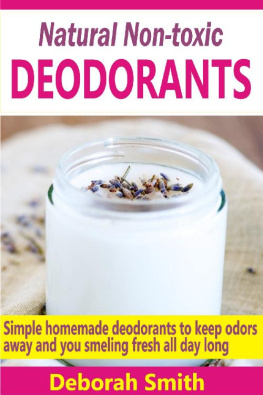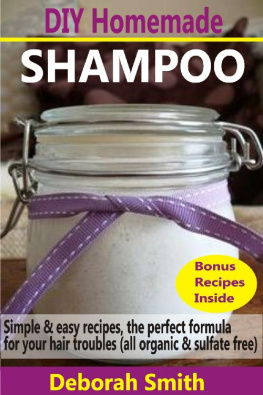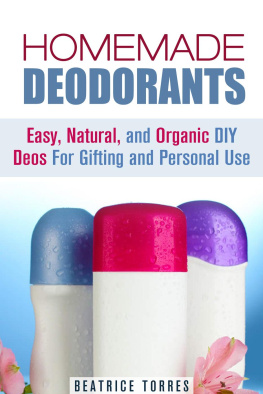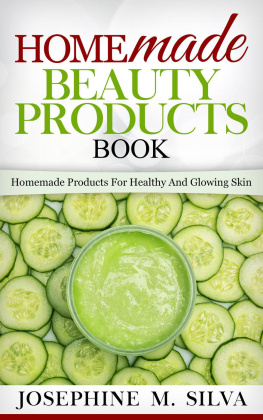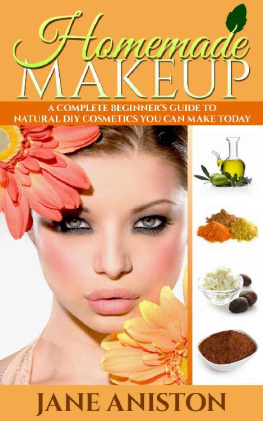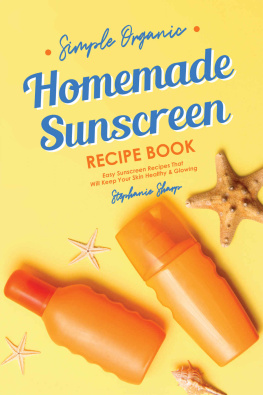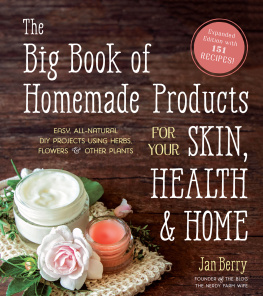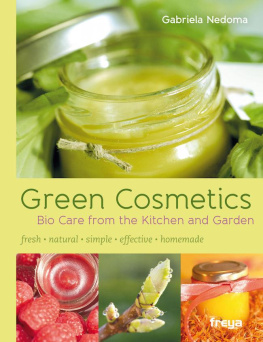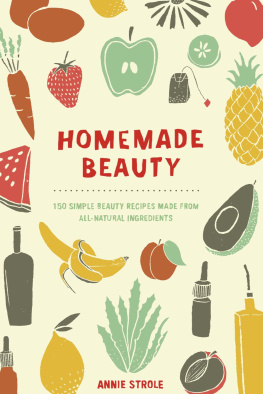Natural Non-toxic
Deodorants
Simple Homemade Deodorants To Keep Bad Odors Away And You Smelling Fresh All Day Long
Deborah Smith
Copyright
Natural Non-toxic Deodorants
Simple Homemade Deodorants To Keep Bad Odors Away And You Smelling Fresh All Day Long
2015, Deborah Smith
ALL RIGHTS RESERVED.
No part of this book may be reproduced or transmitted in any form or by any means, electronic or mechanical, including photocopying, recording or by any information storage and retrieval system without express written permission from the author.
DISCLAIMER
The contents of this book are not intended to treat any disease or as a substitute for medical advice. Please see your physician before starting any treatment for a medical ailment.
Table of Contents
Natural Homemade Deodorant
Why should I make my own deodorant when I can just buy one at the store? Is that the question running through your mind right now or once before?
Sadly almost every store-bought deodorants contain harmful chemicals that penetrate into the skin quickly, causing skin irritation and to the extreme-cancer.
Here is the thing with cosmetics: if you cannot take it in, then you should not apply it on your skin. As simple as that! The same logic goes for deodorants, lotions, toothpastes and anything you can think of. Another thing is if you are eating clean, you will have less need for commercially-produced products.
The Issue with Commercial Antiperspirants
A few years back, no one would have thought aluminum-laden body care cosmetics were harmful until research proved otherwise. Our body is designed to produce sweat, which is actually a good thing as the body regulates its temperature through sweat and releases toxins as well.
What antiperspirant does it to stop this natural activity, which can disrupt the body function. This is bad, real BAD! We shouldnt stop our bodies from doing what it is meant to do. Sweating isnt bad but the foul odor it oozes it is culprit and how to tackle this odor should be our main focus and not interrupting our body normal functioning.
Why Use Deodorant?
Like I said earlier, sweating isnt bad but the odor it oozes makes it bad. Our focus should be on how to fight this odor. Foul odor from sweat is caused by bacteria that lie on the skin surfaces.
When sweat is released, these microorganisms act on it and the end result is unpleasant odor. If you can tackle these microbes, foul odor is HISTORY!
Sweat isnt smelly but when acted on by bacteria, it comes one. Fight these bacteria with deodorant and you will have non-stinky sweat.
In this book, you will come across several homemade natural deodorant recipes to choose from to help you fight body odors and meet your body care needs. You can make several batches for yourself and as gifts for family, friends and loved ones.
Reasons to Ditch Your Store-bought Deodorants and Antiperspirants
Here is a breakdown of some commonly used chemicals in commercial deodorants and antiperspirants you should take note of:
- Talc: Talc is hydrous magnesium silicate, a soft mineral powder used as an anti-caking agent. It is classified as a carcinogen (cancer-causing agent) because it contains asbestiform fibers. If it is listed as part of the ingredients, there is no way of knowing if it contains asbestiform fibers or not. Therefore, it is ideal to stay away.
- Aluminum: Aluminum is used as an antiperspirant to keep sweats at bay. When antiperspirant is used, the aluminum ions are absorbed into the cells of the sweat ducts at the epidermis. When these ions are taken up by the cells, water goes in as well. As more water is absorbed, the cells swell causing the duct to close up and thereby preventing sweats from coming out ( Dr. Eric Hanson, Department of Dermatology, University of North Carolina ) . Continuous use of aluminum accumulates in the body and this leads to removal of calcium and the onset of Alzheimers disease.
- Propylene Glycerol: It gives deodorant slip when it is used. It is also known as antifreeze. According to The National Institute for Occupational Safety and Health (NIOSH), it is a neurotoxin that may cause damage to the liver and kidney.
- Parabens: Parabens are used as preservatives to give cosmetics and beauty products a longer shelf life (lasting life). They are derived from petrochemical, which are toxic if in contact with the skin, inhaled or swallowed. Imagine applying such on your skin daily for years and check what happens. You dont want to imagine! Parabens have been identified as endocrine disruptors because they operate like estrogens. Check your personal and beauty care products and you will find parabens on the label. You will the following parabens in body care products: Ethylparaben (E214), Ethylparaben (E214), Propylparaben (E216), Methylparaben (E218), Butylparaben.
- Triclosan: This is an artificial antimicrobial agent used to kill bacteria on the skin and other surfaces. It is a skin irritant and can cause infections like contact dermatitis. Recent researches have shown that triclosan may disrupt thyroid function and other hormonal systems in the body. The American Medical Association advises that the use of triclosan and other antibacterial products in the home be discontinued as they may encourage bacterial resistance to antibiotics that may allow resistant strains to flourish.
- Diethanolamine and Triethanolamine (DEA & TEA): Both chemicals adjust the pH of surface contact. They are used with fatty acids to change acids to salt (stearates), which become the base for cleansers. They could be toxic if absorbed into the body over a long period of time where TEA can cause allergic reactions and DEA, kidney and liver damage. The use of these products is already restricted in Europe for cancer-causing properties.
- Fragrances: Cosmetics companies can now hide all kinds of toxic chemicals under the label fragrance without revealing them. This loophole is being used to add nasty toxins to personal care products. According to a research done by Environmental Working Group, almost half of the ingredients in fragrance products were not listed on the label. Many of such ingredients are phthalates , which have been linked to obesity, diabetes, cancer, reproductive problems, developmental disorders and birth defects. They are known as neurotoxins, which can stimulate allergic reactions. And again, even the unscented products may contain masking fragrances, which are chemicals used to hide the odor of chemicals.
In addition, please look out for these chemicals as well and avoid products containing them:
- Parahydroxybenzoate
- Parahydroxybenzoic acid
- Ethyl-parahydroxybenzoic acid
- Butyl-parahydroxybenzoic acid
- Methyl-parahydroxybenzoic acid
- Benzyl-parahydroxybenzoic acid
- Propyl-parahydroxybenzoic acid
Properties/Functions of Ingredients in Homemade Deodorants
Each ingredient in a homemade deodorant has specific role it plays to curtail unpleasant odor.
- Organic corn starch/arrowroot powder: Absorb sweat
- Beeswax: For solidifying and as a germ-killing protective barrier
- Baking soda: Anti-odor agent
- Organic coconut oil: Moisturizer and antibacterial
- Witch hazel: A ntibacterial, anti-inflammatory, astringent, and soothing agent. It also prevents razor burn.
- Grapefruit seed extract: Kills odor-causing bacteria
- Vegetable glycerin: For additional moisture
- Mineral water: Draw out toxins
- Organic clay: Removes toxins and heavy metals, balances pH, boosts immune system and for extra protection.
Next page
